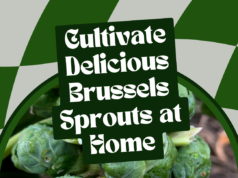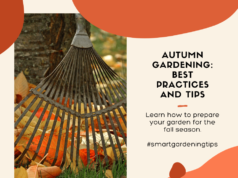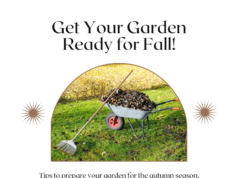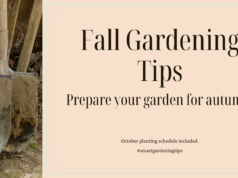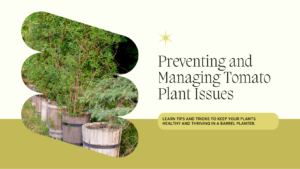
Growing tomato plants in a barrel planter is a great way to cultivate fresh produce in a small space. However, this method also comes with its own unique set of challenges. It’s essential to take preventative measures to prevent these common issues from occurring and to manage them effectively if they do.
Some common issues that tomato plants grown in barrel planters may face include nutrient deficiencies, inadequate watering, and pest infestations. These issues can result in stunted growth, poor fruit development, and even death of the plant.
By taking steps to prevent and manage these issues, you can ensure that your tomato plants thrive in their barrel planter environment, providing you with a bountiful harvest for season after season.
Key Takeaways:
- Tomato plants grown in a barrel planter require proactive measures to prevent and manage common issues
- Nutrient deficiencies, inadequate watering, and pest infestations are common issues that can occur
- Preventative measures include maintaining proper nutrient and watering levels, as well as implementing cultural practices for disease prevention
- Effective pest and disease control measures include identifying and preventing aphids and whiteflies, implementing organic pest control techniques, and protecting against blight and early blight
- Regular inspection, proper watering, and fertilization, along with managing pests and diseases, are crucial for successful tomato plant growth in a barrel planter
Why Barrel Planters Are Popular for Growing Tomatoes
If you’re considering growing tomatoes, barrel planters are a popular choice that offer several benefits. Firstly, barrel planters are portable, allowing you to move your plants around to follow the sun or protect them from harsh weather conditions. They’re also space-saving, making them ideal if you have a small garden or limited patio area. Additionally, barrel planters are excellent at retaining moisture and promoting healthy root development, providing optimal growing conditions for your tomato plants.
Portability
Barrel planters are ideal for the gardener on the go. With their lightweight construction, you can easily move them from one location to another, allowing you to follow the sun and avoid damage from strong winds. This flexibility is particularly useful in areas with extreme weather conditions, as it allows you to move your plants to a safe location to minimize the risk of damage.
Space-Saving Design
Barrel planters are perfect if you have limited space in your garden or on your patio. Because they’re tall, they provide ample space for your tomato plants to grow while taking up a minimal amount of ground space. This means you can fit more plants into a smaller area, maximizing your harvest potential without sacrificing valuable space.
| Barrel Planters | Traditional Planters |
|---|---|
| Space-saving design | Bulkier, taking up more space |
| Easy to move around | Difficult to move once planted |
| Promote healthy root development | May not provide optimal growing conditions |
Optimal Growing Conditions
In addition to being portable and space-saving, barrel planters also provide optimal growing conditions for tomato plants. They retain moisture well, which is essential for healthy plant growth, and they promote healthy root development by allowing air to circulate freely around the roots. Additionally, barrel planters provide better drainage than traditional planters, reducing the risk of waterlogged soil and root rot.
By choosing barrel planters for growing tomatoes, you can take advantage of their portability, space-saving design, and ability to provide optimal growing conditions. With these benefits, you’ll be able to enjoy a bountiful harvest of delicious, juicy tomatoes that will be the envy of all your gardening friends!
Understanding the Importance of Pest and Disease Control
Proper pest and disease control is crucial for growing healthy tomato plants in barrel planters. Pests such as aphids and whiteflies, as well as diseases such as blight, can quickly destroy your plants and reduce yields if left unchecked. Implementing effective pest and disease control measures is essential to ensure healthy plant growth and high yields.
It is best to take preventative measures by regularly inspecting your plants for any signs of pests or disease. Early detection and action are key to preventing the issue from spreading. You should also ensure that the soil is well-draining and that your plants get enough sunlight and water to stay healthy. Limiting stress on the plants in this way can help reduce their susceptibility to pests and disease.
There are various natural pest control methods you can use to protect your plants, such as introducing beneficial insects like ladybugs and lacewings or using companion planting techniques to deter pests. Additionally, you can use organic pesticides when necessary to prevent pest infestations.
Ultimately, taking the time to properly prevent and manage pests and diseases in your tomato plants will pay off with a bountiful harvest of healthy and delicious tomatoes.
Common Pest Threats in Tomato Plants Grown in Barrel Planters
Tomato plants grown in barrel planters are susceptible to several common pest threats that can severely impact the yield and overall health of your plants. The two most common pests that attack tomato plants are aphids and whiteflies.
Aphids are tiny, pear-shaped insects that suck sap from plants and can quickly multiply. They are commonly found on the underside of leaves and can cause wilting, yellowing, and deformities in your tomato plants.
Whiteflies are small, winged insects that feed on the underside of leaves and can also cause significant damage. They excrete a sticky substance called honeydew, which can attract other pests and lead to black mold. Whiteflies can also transmit viruses that weaken your tomato plant’s immune system.
To protect your tomato plants from these common pests, it is essential to detect them early on and take preventative measures.
Early Detection
Regularly inspecting your tomato plants is the key to early detection. Look for signs of aphids, such as distorted leaves, white cast skins, or sticky honeydew. On the other hand, whiteflies are notable when leaves start to yellow or look burnt.
Prevention
One effective way to prevent pests is by practicing companion planting, creating a habitat for beneficial insects and animals that feed on harmful pests. Encourage ladybugs, lacewings, and parasitic wasps, which prey on pests like aphids. Additionally, regularly cleaning your plants will ensure that there are no debris or residues that attract the pests.
An organic solution can also be employed to prevent pests. Dilute natural soap or oil solution and spray the solution onto your plants bi-weekly. The oils or soap will suffocate the pests, depriving them of oxygen, and thus, unable to cause harm to your plants.
Table: Common Pest Threats in Tomato Plants Grown in Barrel Planters
| Pest | Description | Symptoms |
|---|---|---|
| Aphids | Tiny, pear-shaped insects that suck sap from plants | Deformed leaves, yellowing, and wilting |
| Whiteflies | Small, winged insects that feed on the underside of leaves | Yellowed, burnt-looking leaves and sticky honeydew |
By detecting pests early, practicing preventative measures, and using organic solutions, you can effectively protect your tomato plants from damage caused by common pests in barrel planters.
Identifying and Preventing Aphids and Whiteflies
Aphids and whiteflies can be a major problem for tomato plants grown in barrel planters. These tiny insects suck out the sap from the leaves of the plants, causing stunted growth and spreading diseases.
Identifying Aphids: Aphids are small, pear-shaped insects that can be green, brown, or black in color. They appear in clusters on the underside of leaves and leave behind sticky residue, called honeydew.
Identifying Whiteflies: Whiteflies are small, moth-like insects with white wings that are covered in a fine powder. They gather in large groups on the underside of leaves and fly away when disturbed, leaving behind a cloud of white dust.
The good news is that there are natural pest control methods to help prevent an infestation of aphids and whiteflies. One option is to introduce beneficial insects, such as ladybugs, lacewings, and parasitic wasps, which will prey on the pests and help keep their populations under control. Another option is to use companion planting techniques, such as planting herbs like basil and marigolds around the tomato plants, which will help repel the insects.
Effective Disease Management in Barrel Planter Tomatoes
Ensuring effective disease management is an important aspect of growing healthy tomato plants in barrel planters. Two of the most common diseases to watch for are blight and early blight. These can cause widespread damage to your plants and significantly reduce your yield if not managed correctly.
Here are some effective disease management techniques:
- Early Detection: Regularly inspect your plants for signs of disease, including yellowing leaves and black spots. Removing affected branches immediately can prevent further spread.
- Proper Pruning: Removing the lower leaves of your plants can help with airflow and prevent disease from taking hold.
- Watering: Overwatering can increase humidity levels and create ideal conditions for fungal growth. Only water your plants when the top few inches of soil are dry to the touch.
- Crop Rotation: Rotating your crops annually can help prevent the build-up of soil-borne diseases.
Protecting Against Blight and Early Blight
To protect your tomato plants against blight and early blight, consider using a fungicidal spray, like Garden Safe Fungicide 3, which is effective against these diseases. Be sure to follow the instructions carefully to avoid overuse or underuse, which can lead to further problems.
To ensure the best chances of success, it’s essential to implement a comprehensive and integrated approach to disease management. By combining the above techniques with organic pest control and cultural practices, you can create a healthy growing environment for your tomato plants in barrel planters.
Recognizing and Protecting Against Blight and Early Blight
Tomato plants are highly susceptible to blight and early blight, which can quickly spread and decimate an entire crop if not properly managed. It’s important to closely monitor your barrel planter tomatoes for signs of these diseases, including:
- Dark blotches on leaves
- Yellowing leaves
- Wilting leaves and stems
- Brown spots on stems and fruit
If you suspect that your tomato plants have blight or early blight, take immediate action by:
- Removing all affected plant parts and disposing of them in sealed bags
- Disinfecting your gardening tools with a solution of one part bleach to nine parts water
- Applying a fungicide to your remaining plants according to package instructions
Prevention is key when it comes to blight and early blight. To protect your tomato plants from these diseases, make sure to:
- Choose blight-resistant tomato varieties when possible
- Avoid overhead watering, which can spread diseases through water droplets
- Provide adequate air circulation by spacing plants appropriately and pruning excess foliage
- Fertilize plants with a balanced organic fertilizer to promote healthy growth
Implementing Organic Pest Control Techniques
When it comes to pest control in your barrel planter tomato plants, organic options are a safe and effective choice. Not only will you reduce the use of harmful chemicals that can be harmful to the environment, it will also provide safe produce for you and your family to enjoy.
One popular method is the use of beneficial insects, such as ladybugs and lacewings, which can feed on harmful pests like aphids and whiteflies. You can purchase these insects from garden supply stores and release them into your plants.
Another useful technique is companion planting, which involves pairing plants that have natural pest-repelling properties with your tomato plants. For example, planting basil or marigolds near your tomatoes can help repel pests and improve the overall health of your plants.
Remember, it’s important to regularly inspect your plants for signs of pests and diseases, and take action promptly to prevent infestation.
By implementing organic pest control techniques, you’re not only taking steps to protect your plants and the environment, but also ensuring that your barrel planter tomatoes are healthy and safe to eat.
Cultural Practices for Disease Prevention
Implementing cultural practices is crucial for preventing diseases in tomato plants grown in barrel planters. These practices involve creating optimal growing conditions that promote healthy plant growth and prevent the spread of diseases. Here are some tips:
- Sunlight: Ensure that your tomato plants receive at least 6-8 hours of sunlight daily. Place your barrel planter in a sunny area, and prune your plants regularly to ensure adequate light penetration.
- Air circulation: Proper air circulation helps prevent the growth and spread of fungal diseases. Keep your plants spaced apart to ensure adequate airflow, and avoid overcrowding.
- Moisture control: Tomato plants need consistent moisture levels for optimal growth. Water your plants regularly, but do not overwater, as this can lead to the development of root rot and other diseases.
By implementing these cultural practices, you’ll create an optimal growing environment that reduces the risk of disease in your barrel planter tomatoes.
Tips for Successful Pest and Disease Control in Barrel Planter Tomatoes
Caring for your tomato plants in barrel planters requires diligent attention to pest and disease control to ensure optimal growth and harvest yields. Here are some tips to help you successfully prevent and manage these potential threats:
1. Proper Watering Techniques
Tomatoes grown in barrel planters require consistent moisture levels to thrive. Water your plants deeply at the base rather than from above, and avoid watering the leaves to prevent the spread of disease.
2. Fertilization and Soil Management
Applying regular fertilization to your barrel planter tomatoes can help to promote strong, healthy growth and bolster resistance to pests and diseases. Protect against soil-borne diseases by ensuring healthy soil quality through proper drainage, adequate nutrients, and regular tilling or aeration.
3. Regular Inspection and Maintenance
Inspecting your plants frequently is key to identifying and addressing any potential pest or disease issues before they escalate. Check for signs of pests, such as webs, discoloration, or wilting leaves, and remove or treat any infected portions of the plant as soon as possible.
4. Integrated Pest Management
Integrated Pest Management strategies, like introducing beneficial insects or companion planting, can help to prevent or manage pest infestations. Choose plants and flowers that attract natural predators of common tomato pests, such as ladybugs, lacewings, and praying mantises.
5. Seasonal Considerations
Adjust your pest and disease control techniques based on seasonal factors, such as temperature, humidity, and plant growth cycle. Different pests and diseases may be more prevalent during specific growing conditions, so research and adjust accordingly.
6. Proper Storage and Disposal
Store all gardening tools and supplies in a dry, cool location to prevent the spread of disease. Dispose of infected plants and materials properly to avoid the spread of disease to other plants and areas of your garden.
Tips for Successful Pest and Disease Control in Barrel Planter Tomatoes
Congratulations! You have completed the essential steps for successfully preventing and managing common issues in tomato plants grown in a barrel planter. Here are a few additional tips to ensure your plants remain healthy and productive:
- Water your plants regularly and avoid getting the foliage wet to prevent the growth of fungal diseases.
- Ensure your plants receive adequate sunlight, at least 6 to 8 hours per day, to promote healthy growth.
- Fertilize your plants regularly with a balanced fertilizer to provide essential nutrients for growth and disease resistance.
- Inspect your plants regularly for signs of pests and diseases, and take preventive measures early on to avoid severe infestations.
- Consider using natural pest control methods, such as companion planting or the use of beneficial insects, to avoid the use of harmful chemicals.
FAQ
Q. Why are barrel planters popular for growing tomatoes?
A. Barrel planters are popular for growing tomatoes because they are portable, space-saving, and provide optimal growing conditions for tomato plants.
Q. What is the importance of pest and disease control in tomato plants grown in barrel planters?
A. Pest and disease control is crucial for tomato plants grown in barrel planters to ensure healthy plant growth and high yields.
Q. What are the common pest threats in tomato plants grown in barrel planters?
A. Common pest threats in tomato plants grown in barrel planters include aphids and whiteflies.
Q. How can I identify and prevent aphids and whiteflies in tomato plants grown in barrel planters?
A. You can identify aphids and whiteflies in tomato plants by their small size and identifying characteristics. To prevent their infestation, implement natural pest control methods such as using beneficial insects and practicing companion planting.
Q. What are some effective disease management techniques for tomato plants grown in barrel planters?
A. Effective disease management techniques for tomato plants grown in barrel planters include protecting against blight and early blight.
Q. How can I recognize and protect against blight and early blight in tomato plants grown in barrel planters?
A. You can recognize blight and early blight in tomato plants by their distinct symptoms, such as yellowing leaves and dark spots. To protect against these diseases, practice proper sanitation, provide adequate air circulation, and avoid overhead watering.
Q. What are some organic pest control techniques that can be implemented in barrel planter tomatoes?
A. Organic pest control techniques for barrel planter tomatoes include using beneficial insects and practicing companion planting.
Q. What cultural practices can I implement to prevent diseases in tomato plants grown in barrel planters?
A. To prevent diseases in tomato plants grown in barrel planters, create proper growing conditions with adequate sunlight, air circulation, and moisture control.
Q. What are some tips for successful pest and disease control in barrel planter tomatoes?
A. Some tips for successful pest and disease control in barrel planter tomatoes include proper watering, fertilization, and regular inspection of plants.
CONCLUSION
Remember that successful pest and disease control in barrel planter tomatoes requires a proactive and consistent approach. By implementing the tips outlined in this article, you can maximize the success of your tomato plants and enjoy a bountiful harvest.


